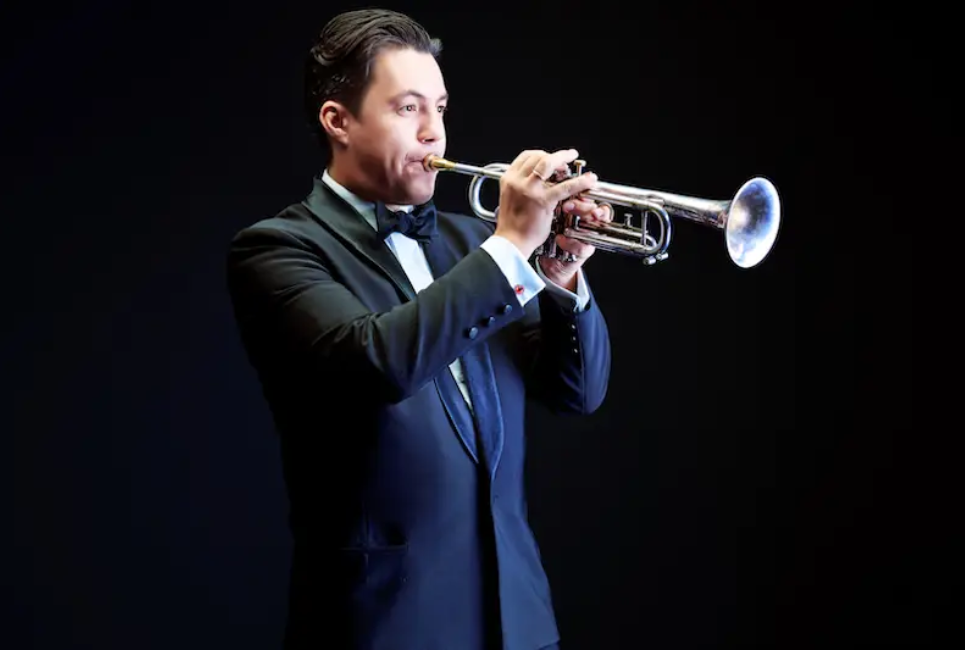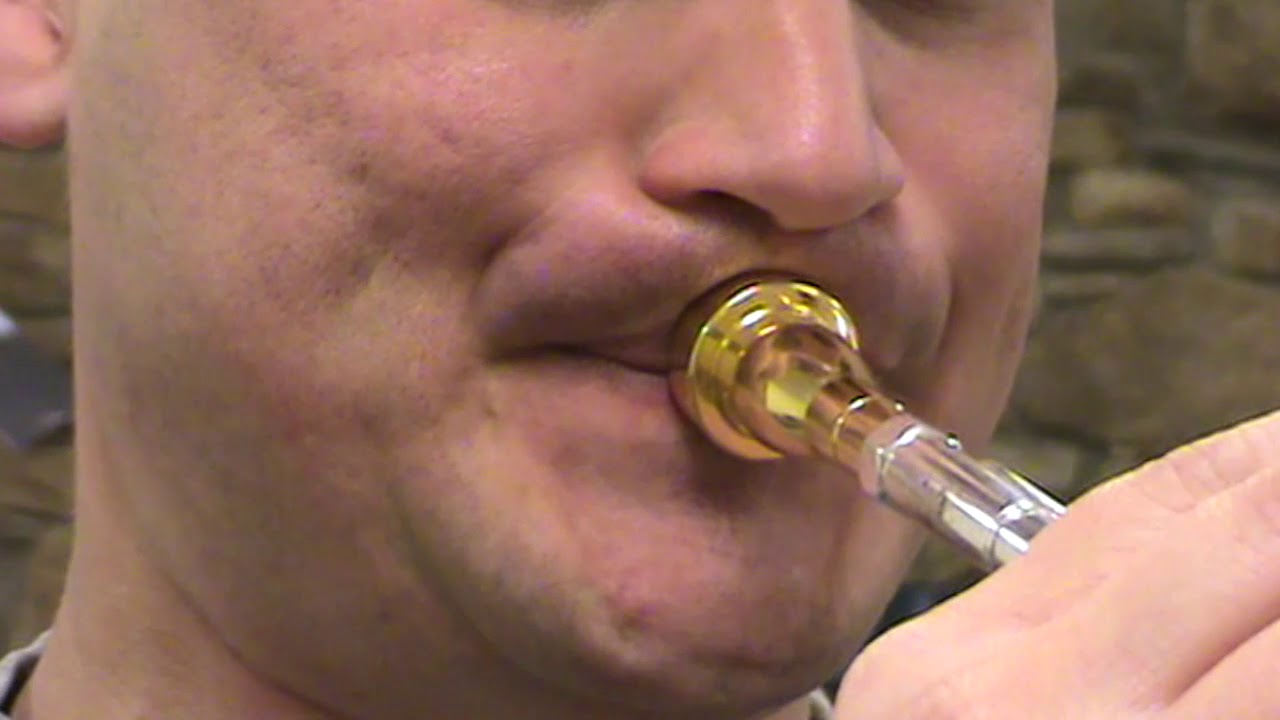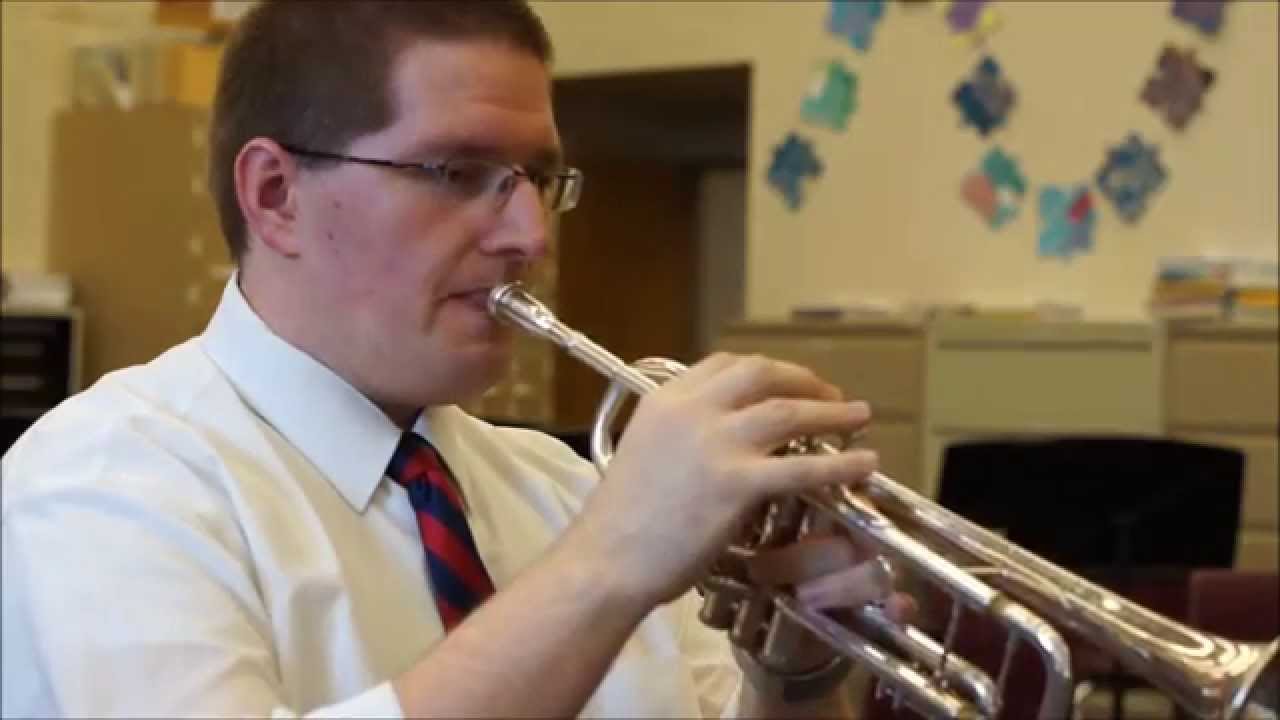- Top Trumpet Embouchure Techniques: Options for Beginners Through Professionals - October 12, 2022
- Is the Trumpet Hard to Learn? - September 30, 2022
- Best Leblanc Clarinet Models Guide: From Soprano to Contrabass - September 5, 2022
Do you struggle to get a good sound out of your trumpet? I know what it’s like to feel like you’re using all of the top trumpet embouchure techniques you can but still have problems playing music.
As wind players, we have to use our bodies quite a lot, from the lips to the lungs. You can’t just bow or pluck a string and expect to get a sound.
However, the right embouchure techniques can help significantly. That way, you don’t have to struggle to get a nice sound, so you can spend more time practicing other aspects of music.
Bottom Line Up Front: A good trumpet embouchure requires wet lips, good air support, and consistent practice. Read on to learn how to achieve these things whether you’re a beginner or have some playing experience.
Top Trumpet Embouchure Techniques
One of the most important parts of learning to play the trumpet is mastering your embouchure. This refers to how you shape your lips to help move air into the instrument to create a sound.
Without a good embouchure, you may not be able to get a sound out at all. Or if you can make a sound, it probably won’t sound very pleasant, but working on your embouchure can help.
Fortunately, you can try multiple embouchure techniques to work on your trumpet playing. Here are some things I recommend you try.
Learn the Right Embouchure Formation
First, you should learn how to make the trumpet embouchure. You need to make your chin flat and keep the corners of your lips firm (not tight).
Make sure your teeth are apart enough to let air through, and you’ll also need a slight aperture hole in between your lips. The bottom lip can curl under itself slightly but not too much.
Do your best not to let your cheeks puff out, even when holding your breath. Instead, hold the air in the center of your mouth so that it can easily move into the trumpet when you need to play a note.
Now, you may find slight differences in the embouchures of trumpet players. We all have different anatomy, so you should experiment to find what setup works best for you.
Start With M
To help form the right trumpet embouchure, you should say the letter “M.” Feel how your lips move and the shape they make when you say that so that you can get a good idea of where your lips go when you play the trumpet.
You shouldn’t smile when forming your embouchure because that can pull your lips back too far. Grab your mouthpiece and experiment with the exact shape your lips need to be.
Some mouthpieces have larger rims than others, and that can affect your embouchure. Whenever you get a new mouthpiece, you might have to do this again and go through an embouchure change.
Take Deep Breaths
Forming the best trumpet embouchure involves more than your lips. You need to learn how to breathe and how to move your air through your mouth and into the instrument.
Wind players should breathe as deeply as possible. Some people call this breathing with your diaphragm (the muscle below your lungs), but the diaphragm works automatically.
Practice filling your lungs with as much air as you can and then expelling all of that air. When I play, I try to breathe in through my nose so that I don’t have to open my lips to take a breath but can still take in as much air as I need.
I’d also recommend standing if you can or at least sitting upright. Then, you can feel your torso expand in all directions as you breathe in air, so you’ll have more air to help support your embouchure and overall playing.
Practice Buzzing
Whether you play trumpet or any other brass instrument, you need to buzz your lips to make a sound. You should practice breathing first because you’ll need plenty of air to buzz.
Put your lips together, and try to push air through the lips without opening them too much. That should create a buzzing sound, but it can take a while to get a good, consistent buzz.
You can practice buzzing with or without your trumpet or mouthpiece. If you don’t have much time to play, practice buzzing while you’re sitting at a red light or when you’re walking to class or work.
The next time you pick up your trumpet, your buzzing should be better. That way, you can take more of your practice time to work on other embouchure techniques that require the instrument.
Wet Your Lips
If I try to buzz my lips when they’re dry, I can do it, but it feels almost impossible. Buzzing with wet lips makes the process much easier, so you should try to wet your lips before playing trumpet.
You shouldn’t lick your lips because that can actually cause them to dry out. However, you can drink plenty of water to keep your lips moist.
I also love using ChopSaver lip balm, which is by musicians for musicians. Put it on about half an hour before you plan to play so that it can absorb into your lips.
Then, you don’t have to worry about your lips being too dry to help you buzz them.
Stand Up Straight
Sometimes, all you need to improve your trumpet embouchure is a quick fix. Take a look at yourself in a mirror and see how your body is and how you hold your trumpet.
If your trumpet bell points toward the floor, raise it up so that your mouthpiece can be parallel with your lips. And if your posture isn’t the best, work on standing or sitting up straighter.
Of course, you don’t want to hurt yourself in the process. However, having good posture and bringing your trumpet up to meet your lips can make it easier to get a good sound with your embouchure.
Take the Pressure Off
When you play the trumpet, you need to use the slightest amount of pressure. That will help keep your mouthpiece against your lips so that you can produce a sound.
As you play more advanced music, you may need more pressure for higher notes. However, don’t apply more pressure than is absolutely necessary.
Putting too much pressure on your lips can make it hard for you to be flexible with your embouchure. That can make it hard to play higher and lower notes, but it could also lead to pain and discomfort after playing.
If you notice your lips hurt after a practice session or rehearsal, work on your embouchure next time. Focus on relieving some of that pressure without sacrificing your tone quality.
Firm, Not Tense
Using too much pressure can also lead to tension in your lips and even other parts of your body. If you feel like you have to stress to hit a certain note, your body can sense that.
Maybe high D is tough for you, and you use a bit more pressure on that note. That might be fine, but the stress could cause you to hold more tension in your throat, shoulders, or other parts of your body.
I’m not a body mapping expert, but the whole body works together. While your lips should be firm when you play the trumpet, they shouldn’t feel tense or make other parts of your tense.
If you have problems with this, work with a body mapping expert, like Lea Pearson. She can help you uncover any problems and work on reducing tension.
Try a Ring
One of the best ways to work on your embouchure is to evaluate how it is right now. Of course, this can be tough when you only work on it with your mouthpiece against your lips.
Look for a ring (yes, like a piece of jewelry) that’s about the same size as your mouthpiece. Place the ring against your lips as if you were playing your trumpet, and look at your lips in the mirror.
That can help you see how much of your embouchure is in the ring. You’ll also be able to tell if you tend to play off-center or if you place your mouthpiece too high or low on your lips.
Adjust the placement of the ring to where the mouthpiece needs to be, and feel how it feels. Then, replace it with your mouthpiece and see if you get a better response.
Work on Your Scales
Eventually, you’ll need to work on your embouchure using different notes. An easy way to start is to play some basic scales, such as your major or minor scales.
The chromatic scale is probably the best option since it covers every note you can play. Start on a note that’s easy for you to play, like an open C, and play up as far as you can, a half step at a time.
Return to the C and play down as far as you can in the trumpet’s range. Do this as slowly as you need to, and feel how your embouchure has to adjust to play higher and lower notes.
Of course, be sure to notice any tension or pressure, and stop if you feel that way. Then, you can work to eliminate the tension and play more freely.
Slowly Expand Your Range
If you’re still learning new notes on the trumpet, learn one note at a time. It can be tempting to get a fingering chart and learn everything at once, but going slowly can help you a lot.
You’ll be able to make small adjustments to your embouchure to learn the next highest or lowest note. Plus, you can focus on how that note sounds and feels before you move on.
It will take time, but you’ll eventually learn all of the notes in the trumpet’s range. If you know the whole range, review each note slowly, and focus on any pitches that are particularly difficult for you.
Use a Tuner
As you learn new notes or review notes you know, do it with a tuner. You can buy a physical tuner or download an app on your phone, and you can place the device on your music stand.
Play a note, such as an open C, and see what shows up on the tuner. You should see it register a Bb since that’s the concert pitch of a C on a trumpet.
If the tuner shows something else, you need to adjust your embouchure. Now, if the tuner says you’re slightly sharp or flat, you can make a smaller adjustment to get the correct pitch.
I’d recommend printing off a fingering chart and marking the natural tendencies of each note. Then, you can reference that when practicing, and you can figure out how to sharpen or flatten the pitch accordingly.
Practice Regularly
No matter which trumpet embouchure techniques you use, do them consistently. You can’t do them once and expect a significant change to occur.
You’ll need to practice every day for weeks or even months before you master the trumpet, and that’s normal. Fortunately, you don’t have to practice for hours and hours.
Even just a few minutes of embouchure work each day can add up over time. In a few months or a year, you may have a much better embouchure and overall trumpet sound.
Take Breaks
I can’t stress enough how important it is to give yourself practice breaks. This is crucial if you’re a serious trumpeter and play for hours a day, but it’s also useful for amateurs who practice less than that.
Taking breaks allows you to absorb the new things you learn. It can give your lips time to learn what a good embouchure feels like, and you can keep from developing an overuse injury.
You should take breaks no matter what, but definitely stop playing if you feel in pain. That’s your body telling you it’s time for a break whether the pain is in your lips, arms, or elsewhere.
Don’t pick up your trumpet until you feel well again. The same is true if you feel sick and have a cold, the flu, or some other illness. Any work you do now might not stick, so focus on getting better.
Listen and Watch Others
If you still want to work on your trumpet playing while you take a break, you can do so. I’d recommend listening to recordings of some great trumpeters, such as Louis Armstrong.
You can also look on YouTube for videos of trumpet players performing. Zoom in on their lips to see if you can see much in the way of their embouchures.
Depending on the frame, the zoom might be blurry, so you can simply listen. When you’re ready to start playing again, you can use those recordings as inspiration to help experiment with your embouchure.
Take Private Lessons
You can do a lot of good trumpet embouchure work on your own. However, if you want to get specific feedback or if you want to improve more efficiently, you need a private teacher.
Ideally, you’d find a teacher in your area so that you can attend lessons in person. That way, the teacher can better show you how to form your embouchure.
But I know that’s not an option for everyone, and you may not feel safe. In that case, you can find a teacher online, and they can explain the basics and watch your embouchure over video chat to help you improve.
A teacher can also make suggestions based on you, the gear you have, and your goals. Even the best tutorial you find online will be pretty general, and the advice may or may not work for you.
FAQs about the Top Trumpet Embouchure Techniques
Answer: It can take anywhere from three months to a year to really improve your trumpet embouchure. The timeline depends on how much you practice a day and if you have experience with brass instruments or not.
You also may take longer than someone else, and that’s okay. Don’t let the progress of others stress you out and make you feel like you’re behind.
Answer: If you’re a beginner, you should practice 10 to 20 minutes a day, maybe 30 minutes after a few months of playing. As you advanced, you can practice for 30 to 60 minutes a day.
Many serious trumpeters practice for at least an hour a day, but some practice much longer. Consider your goals as well as your other obligations when creating a trumpet practice schedule.
Answer: Your teeth can affect your trumpet playing. If you haven’t had braces or if you didn’t wear your retainer as you should have, your teeth might not be where they should be and could cause issues.
A significant underbite or overbite could also keep you from forming the best possible trumpet embouchure. Be sure you talk to your dentist about any issues you have to learn how you can fix them.
Answer: Like your teeth, your tongue is also an important part of your trumpet playing. You use your tongue to start and stop the air, and it needs to be flexible.
If you have a significant tongue-tie, you may want to have a frenectomy to remove it. That can make it easier for your tongue to move to help you get a better trumpet sound.

Final Note on the Top Trumpet Embouchure Techniques
The top trumpet embouchure techniques can help you improve your playing significantly. Some are things every player should do, such as work on buzzing their lips.
Others may require a bit of practice, like learning new notes slowly. However, be sure to give all of the techniques a try to see what works best for you.
And if something doesn’t work now, try it again in a few months after you’ve improved a bit.
Looking for more interesting readings? Check out:









